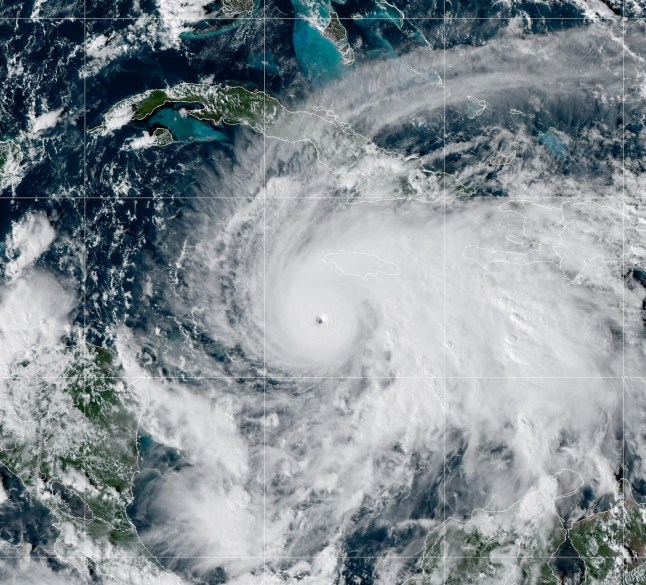
Hurricane Melissa is now the strongest storm on the planet this year (Picture: Press Wire/Shutterstock)
Matthew Samuda,Jamaica’s water and environment minister,said he had more than 50 generators available to deploy after the storm,but warned people to set aside clean water and use it sparingly.
‘Every drop will count,’ he said.
Hurricane categories explained
Meteorologists use the Saffir-Simpson Hurricane Wind Scale to measure a hurricane’s strength,with Category One being the weakest and Category Five the strongest.
Category One: winds of 74 to 95 mph and minor damage,such as falling debris and older mobile homes destroyed.
Category Two: winds of 96 to 110 mph with well-constructed framed homes sustaining major roof and siding damage.
Category Three: winds of 111 to 129 mph,with water and electricity unavailable for several days to weeks after the storm passes.
Category Four: winds of 130 to 156 mph,with well-built framed houses potentially sustaining severe damage.
Category Five: winds of 157 mph or higher with a high percentage of framed houses destroyed,total roof failure and wall collapse.Melissa was already blamed for seven deaths in the Caribbean,including three in Jamaica,three in Haiti and one in the Dominican Republic,where another person remains missing.It was also expected to make landfall in eastern Cuba later today as a powerful hurricane.A hurricane warning was in effect for Granma,Santiago de Cuba,Guantánamo and Holguin provinces,while a tropical storm warning was in effect for Las Tunas.Up to 20 inches of rain were forecast for parts of the country,along with a significant storm surge along the coast.Cuban officials said Monday that they were evacuating more than 600,000 people from the region,including Santiago,the island’s second-largest city.
